The ultimate guide to understanding your power bill
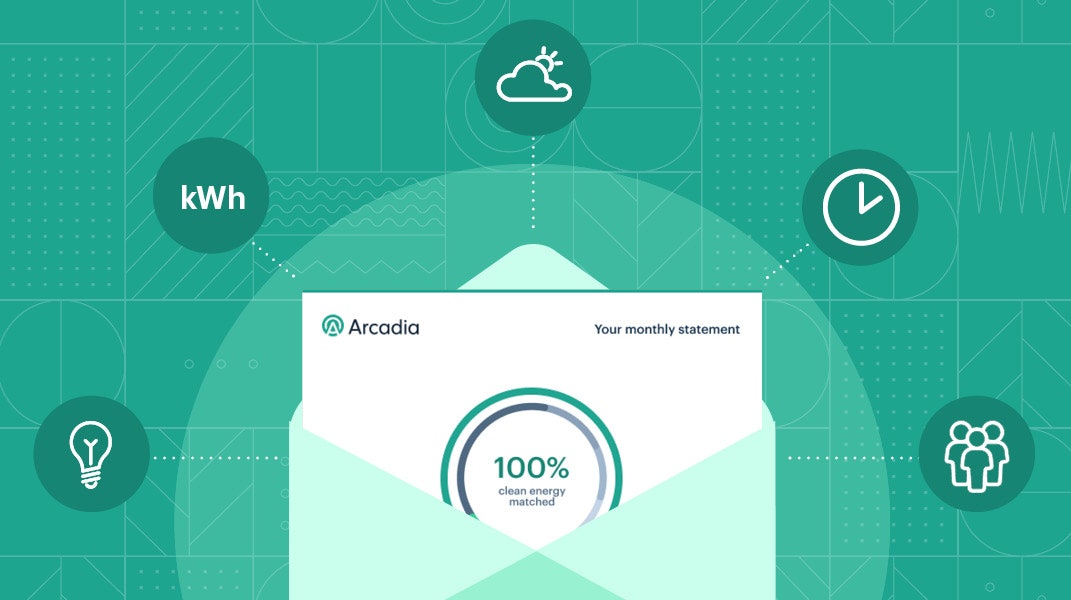
When was the last time you took a good, hard look at your power bill? Like, actually read through the different parts of it? If your answer is “Never,” you’re not alone.
But as we all spend more time at home and maybe start paying a little more attention to our energy usage, understanding how to read your energy bill can have big benefits.
When you understand what your bill says, you can start to make smarter decisions to reduce your energy usage, which will save you money on your energy bill.
Let’s start by breaking down what’s on your bill. This article will focus on the power bill you receive from your utility company. If you’re an Arcadia member, check out our guide to your clean energy statement.
What’s on your bill?
Your electric bill may include two separate parts: an overall summary that includes your basic account information, bill summary, current charges, and electric price and a more comprehensive breakdown of your energy consumption. That breakdown will typically include:
Meter reading
Your meter information will show the date the meter was read as well as your current and previous meter readings. The difference between your previous and current meter readings is the number of kilowatt-hours (kWh) of electricity you used in the billing period. So if your previous meter reading was 22,000 kWh and your current meter reading is 22,700 kWh, then you used 700 kWh during that period.
We’ll get into kWh more in a bit.
Breakdown of services/price of services
This part of your bill shows all the different services that are part of getting energy to your home. You’ll usually see transmission charges, generation charges, customer charges, and distribution charges. These charges make up the bulk of your bill.
Each type of charge will have a different price per kWh. These prices are calculated by multiplying your current kWh used by the rate for each charge — sticking with our 700 kWh of usage, we’d multiply that by the transmission charge rate, for example.
Usage profile
This section usually has two parts. One will show you the total kWh that you’ve used in previous months, while the other will show your kWh usage for the current and previous month as well as for the same month the previous year. This part will also include your average daily usage and may even include average daily temperatures.
Your usage profile gives a high-level view of your energy consumption patterns. You’ll be able to see when you use the most energy, which means that you can make changes to your energy consumption habits. That can help you save money in the long run.
What is a kWh?
To really understand your bill, you have to understand what a kWh is. A kilowatt-hour is the unit of measurement for electricity usage. It’s actually two measurements in one: speed and time. Wattage measures how fast electricity is being used, and time measures how long that electricity is being consumed at that speed.
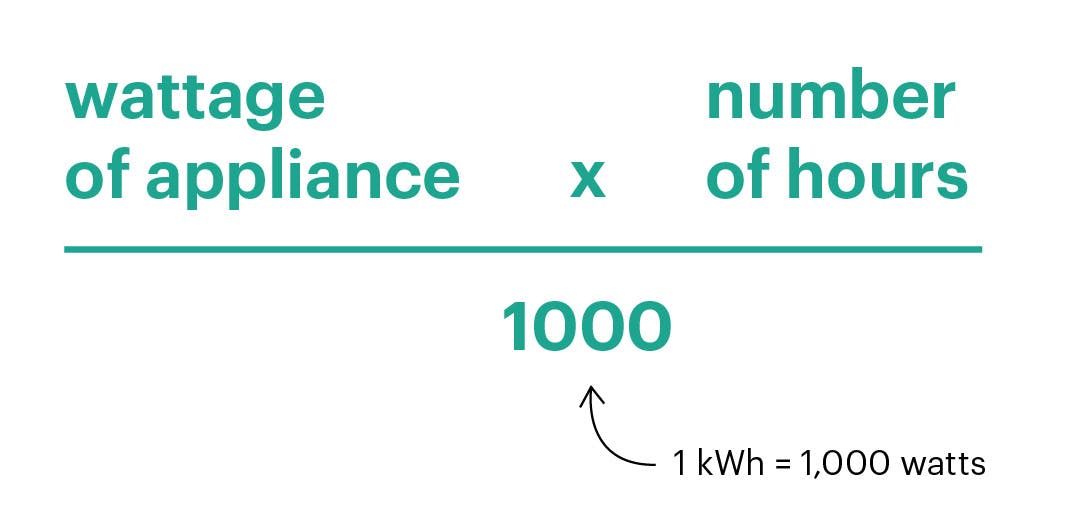
Put another way, if you multiply the wattage of any appliance by the number of hours you use that appliance and then divide by 1,000 (one kilowatt is equal to 1,000 watts), you’ll have the kWh measurement for that appliance. Take a 65-inch curved Samsung TV, which outputs at 72 watts. To see how much energy the TV used over five hours of binging your favorite show, multiply 72 watts by five hours, then divide by 1,000. You’d get 0.36 kWh. You can do this for pretty much any appliance — wattage is usually printed on the device itself.
What does one kWh look like in real terms? Here are a few examples of one kWh in action:
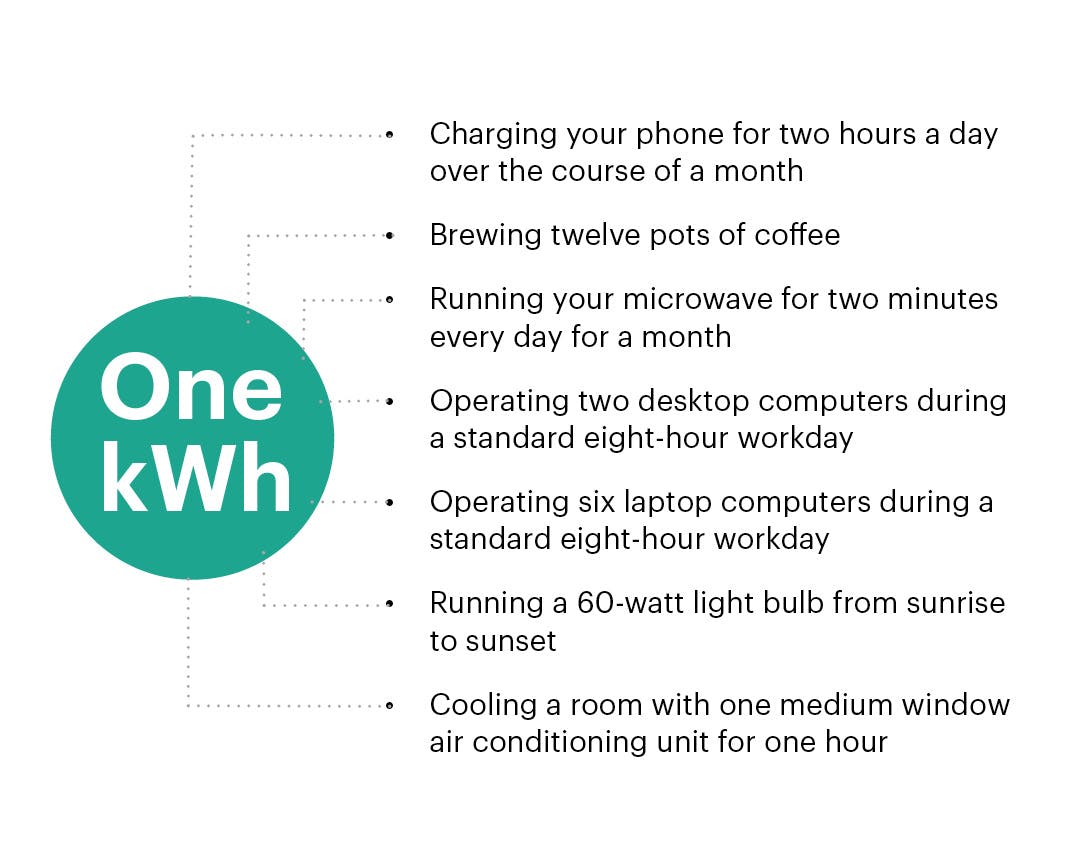
What’s a typical monthly energy bill?
Your monthly energy costs will depend on where you live, what type of residence you live in, and how many people live with you.
One-bedroom apartment
For just electricity — not electricity and heating — your monthly bill for a one-bedroom apartment will likely stay around $30-50. That’s without air conditioning, though. Typically, air conditioning will cost $250-300 a year to run. Because you probably don’t run your air conditioning all year, though, that cost isn’t spread out over 12 months. For the months that you do turn your air conditioner on, you’ll probably pay an extra $50-80 a month on your electric bill. If you live somewhere with warmer, longer summers, it may be more like $80-90 a month.
Three- or four-bedroom house
According to the Energy Information Administration, the average home uses 897 kWh of energy per month. In 2018 (the last year for which data is available), that meant that the average residential monthly electric bill was $117.65. But electricity costs vary widely by location; the average Hawaiian residential consumer spends $203 a month on electricity.
What impacts the size of your energy bill?
Energy mix
Do you ever think about what resources go into generating the electricity that you use? It turns out that mix of resources helps determine the cost of your power. The US Energy Information Administration projects that natural gas will generate roughly 39% of US electricity in 2020, while coal will generate 20%. Natural gas generation is rising, while coal generation is on the decline across the country, which means that more homes will be getting electricity from natural gas. With more demand for natural gas, prices will rise.
Rising costs for natural gas actually create opportunities for renewable energy. Both wind and solar energy cost less than coal. The problem is that they’re not widely available yet. The sector is expanding, however -- wind turbines and solar farms are popping up across the country -- especially as more states set clean energy goals.
Technology advancements are making renewable energy even cheaper and more efficient, which may actually lower the costs of coal and natural gas even further. As renewable energy expands, the demand for natural gas and coal will begin to decline. Prices will follow. Eventually, these two “dirty” forms of energy generation will cede control of the energy market to renewable forms.
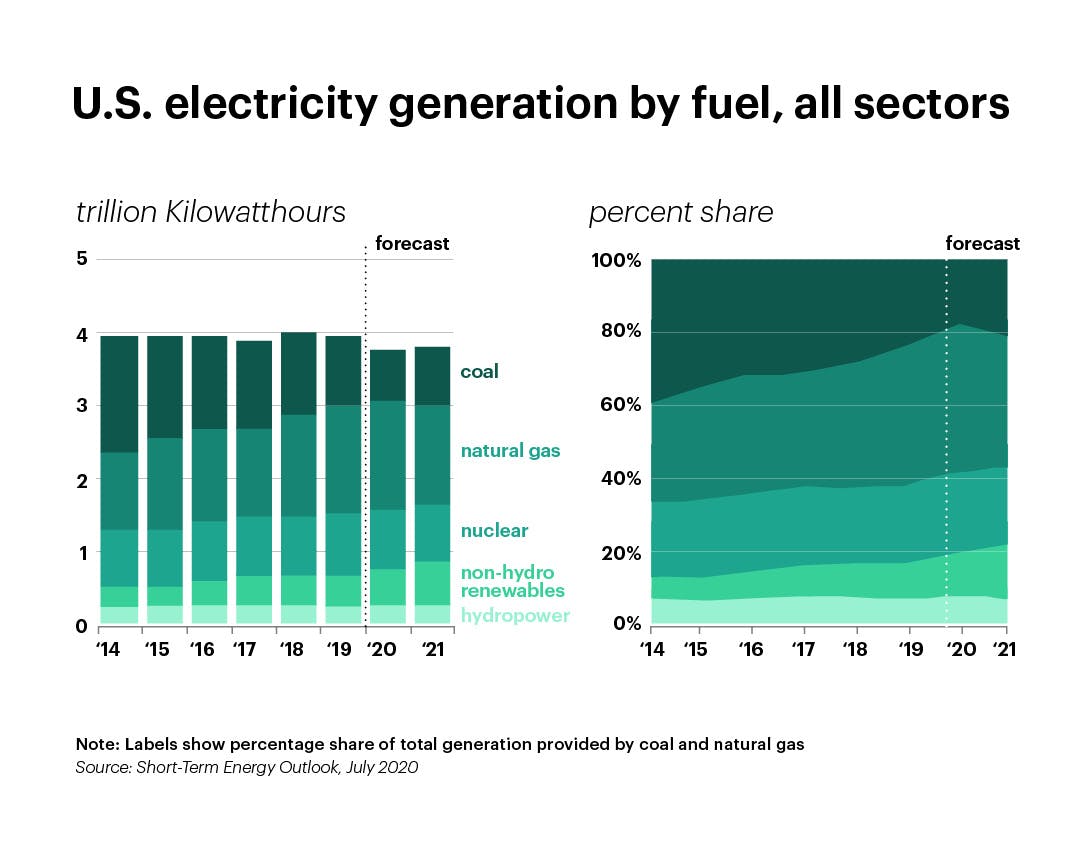
Rate structures
The price you pay per kWh will depend on what type of energy rate you have. Rates vary by state. Some states have regulated markets, while others have deregulated markets. What does this have to do with rate structure? In deregulated markets, you can shop for better energy rates.
Rates themselves fall into four categories:
- Fixed rates - These are exactly what they sound like: rates that don’t change. Your utility company will charge you a specific amount per kWh used. You may see additional fees at times, but overall a fixed rate is predictable and simple to calculate.
- Variable rates - Variable rates are more like a rollercoaster. Utility companies implement variable rates in different ways. Some will charge a higher rate during summer and winter because people are using more electricity to stay cool or warm. Some will charge a low fixed rate for a specific number of kWh used and then a higher rate for any kWh beyond that. Time-of-use rates may be part of variable rates, too.
- Time-of-use rates - Under time-of-use rates, you pay more or less for energy depending on what time of day you use that energy. During peak hours (e.g., first thing in the morning or in the evening after work), some utilities will charge more for electricity because demand is high. If you’re on a time-of-use rate, try to shift some of your electricity use to off-peak times to lower your bill (e.g., run your dishwasher overnight).
- Demand rates - Demand rates are typically reserved for commercial or industrial buildings, but may be an option for residential consumers. They are based on your peak electricity usage. If your business requires high energy usage during peak times, you’ll be responsible for an added charge on your total bill.
Weather
Climate change has led to more extreme seasons and storms all around the US. To stay comfortable during hotter summers and colder winters, people need to use more energy. That means higher energy bills, either because you’re using more electricity — heating and cooling account for about half of electric bills — or because your utility is charging peak rates.
That’s why you need to take advantage of spring and fall.
When the weather is milder, you can make small lifestyle adjustments that will benefit you (and your bill) in the long run. Open the windows instead of cranking up your AC. Put on a sweater when there’s a chill in the air. Even small changes can lower your energy bill.
Insulation
The quality of your home’s insulation plays a major role in the size of your energy bill. Strong insulation makes your home more energy efficient, which means it will stay cooler in the summer and warmer in the winter. Without proper insulation, much of the energy you would use to heat or cool your home will leak out. If all homes in the US were insulated properly, residential electricity use would fall by about 5% across the country.
Luckily, there are many ways to improve your home’s insulation, including fixing cracks and crevices around your windows and using window blinds to keep your home cooler. Any improvements you can make will help lower your monthly energy bill.
Personal habits
The electrical gadgets that you use in your everyday routines are another major factor in your energy bill. When you use those gadgets can make a big difference in your bill, especially if your utility charges more for electricity during peak times. If you like to watch TV in the evenings, for example — and maybe be on your laptop and your phone at the same time — you may be paying more for electricity.
Changing your personal habits can help you save money. Rather than using your evenings to watch TV, catch up when you have a free morning or afternoon. Do chores that require more electricity, such as running the dishwasher or doing laundry, earlier in the day or later at night to cut back on peak-time energy use. Your bill will thank you.
Number of occupants
This one’s simple: the more people you have in your house, the more energy you’re going to use. With more people watching television, cooking, washing clothes, and keeping lights on, it makes sense that your energy bill will be higher.
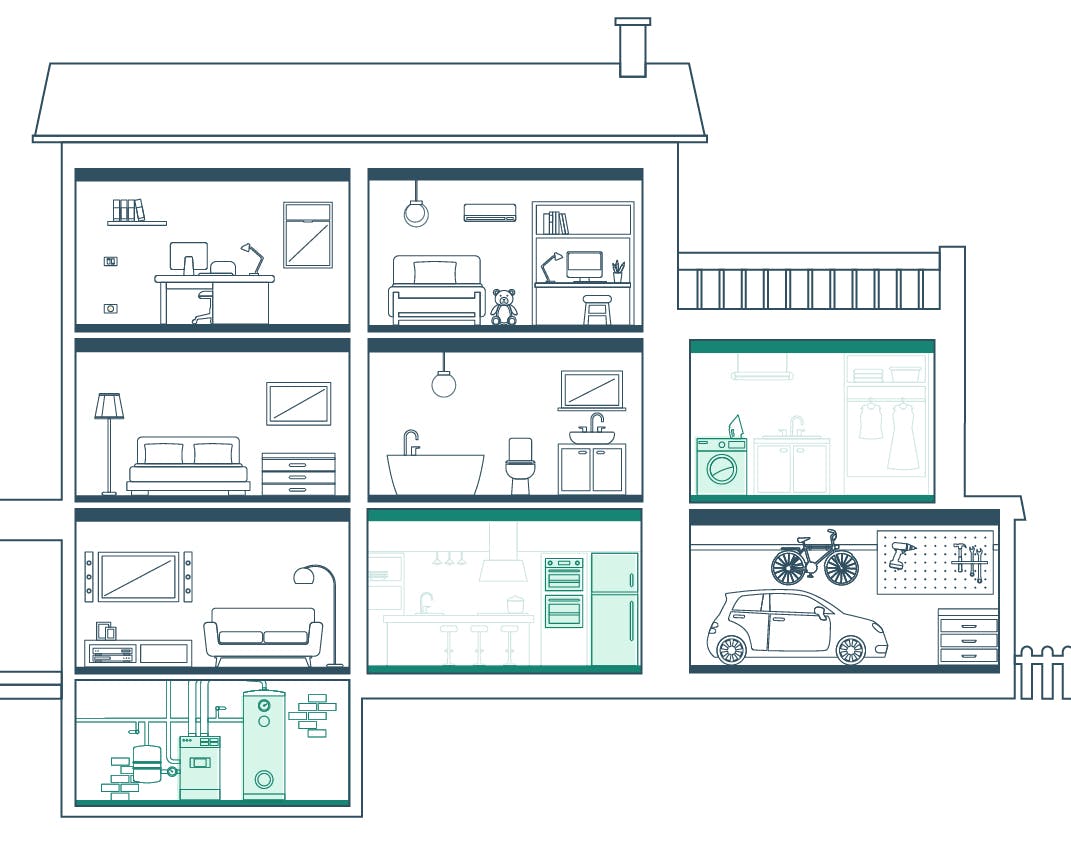
How can you lower your average cost per kWh?
While your electricity bill is made up of several factors, you can still take matters into your own hands to lower your average cost per kWh.
- Conduct a home energy audit - Take a few minutes to understand how many kWhs of energy your daily appliances and devices are using so that you can be more intentional about what you use when. You can use the calculations above to convert wattage to kWh for your appliances.
- Monitor when you’re using major appliances - Obviously you can’t turn off your refrigerator when you’re not home. But you can make sure that you’re using the appliances that require the most energy in the most efficient way. Set the defrost cycle on your refrigerator to run in the early morning instead of the evening, for instance. If you can hang dry your laundry, do that instead of running your dryer, or run your dryer first thing in the morning. Another bonus from not running your dryer? Less work for your air conditioner.
- Use smart power strips to reduce idle power usage - Smart power strips reduce the flow of power to vampire power sources, or devices that drain energy even when you’re not using them. By plugging your television, computer, and any other high-energy usage device into a smart power strip, you can lower your idle power usage.
- Switch your light bulbs out for LED bulbs - Once you begin using LED bulbs, you’ll never turn back. Although they may cost slightly more than incandescent bulbs up front, LED bulbs use 75% less energy than incandescent bulbs and last far longer.
- Take shorter showers - This tip is simple but true. Not only will taking shorter showers reduce your energy bill (less time heating all that water), it will also lower both your water and carbon footprints.
- Clean and maintain your air filters - Because your HVAC system is such a big contributor to your power bill, it’s important to make sure it’s running efficiently. If you neglect your air filters, your HVAC unit’s performance will steadily decline while your energy use will steadily increase. The Department of Energy estimates that replacing an old, clogged air filter can lower your HVAC’s energy consumption by 5-10%.
None of these are complicated or particularly time-consuming tactics, but doing even a few of them could help you save as much as 25% on your electric bill.
